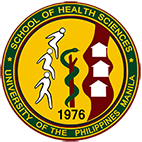Campus
HISTORY
In the seventies, the disturbing picture of the country’s health and health manpower situation placed the UP College of Medicine in a dilemma regarding its role in nation building. Its high standards of admission, performance and commitment to academic excellence made its graduate leaders in Philippine medicine and its curriculum the model for other medical schools to copy. However, these gave rise to over specialization, the brain drain, maldistribution of health manpower which were disproportionately concentrated in urban areas and neglect of the rural areas.
In 1971, Dr. Francisco Nemezo, the Dean of the UP College of Arts and Sciences in Deliman, expressed that the fierce competition for admission to the College of Medicine was breeding a generation of individualistic, self-centered, grade-conscious arts and sciences students who cared not for knowledge and how it could help serve their people but to have good grades that would allow them to enter the College of Medicine.
Dean Herrera, thereafter convened an “Extraordinary Curriculum Committee of the College of Medicine” to design a medical curriculum that would develop graduates who were not only scientifically disciplined and medically competent but more importantly, socially conscious, but more importantly, socially conscious, community-oriented and firmly committed to the service of the people, thus giving birth to the step-ladder curriculum and to the Institute of Health Sciences.
The UP Institute of Health Sciences (IHS) was established on June 28, 1976 in Tacloban City, Leyte as a joint endeavor of the Ministry of Health, The Ministry of Local Government and Community Development and the UP System. The Step-Ladder Curriculum was approved by the UP Board of Regents during its 871st meeting in April 19,1976. With the support of the governor’s staff, IHS opened its doors to a select group of 96 students, who started with the Certificate in Community Health Work (CHW), leading to the degree of BS Rural Medicine.
In 1981, the SHS campus moved to its present location in the Town of Palo on 4,083 square meters lot donated by the municipality of Palo, Don Pio Pedrosa. The donation was put the efforts of by the virtue of Resolution 82-71 on October 20, 1982.
On May 3, 1989, after 13 years of operation and being referred to as the “Tacloban Experiment,” the HIS was renamed as the School of Health unit by virtue of the Reorganization Act of UP Manila.

